
What Should You Do When Your DIY Pest Control Goes Wrong?
Posted by Editor on Nov 14th, 2018 in Pest Control | 0 commentsMany people are often tempted to forgo a professional pest control management company and instead try to get rid of the infestation problems by themselves.
This can often involve using all kinds of methods, equipment, and even chemicals to get rid of cockroaches in specific areas around the house, or even to treat bed bug infestations in mattresses and textiles. However, exterminating a major pest problem at home by yourself can be really dangerous.
For instance, when using organic pesticides or chemicals improperly, there are plenty of adverse effects that can happen not just to you, but also the people you live with, as well as your neighbors. To achieve quick effective removal of pests, it is still better to seek assistance from professional pest control service in Singapore.

When DIY Pest Control Goes Wrong
There are a lot of reasons why trying to solve your pest infestation on your own can go wrong, and in so many different ways:
• Venomous insects – When you attempt to terminate pest infestations at home by yourself, you put yourself and everyone around you at risk of being bitten, especially in the case of venomous spiders.
This is the reason why professional pest control services technicians always wear full safety gear and equipment to minimize these instances.
• Unpredictable behavior – Pests don’t always respond to pest control chemicals. They can sometimes act even more aggressively than before, or the chemicals will have no effect on them at all. This can explain why it’s difficult to kill rats.
• Pesticide poisoning – Chemical pesticides are designed to kill, so they need to be handled carefully and with professional equipment. Without them, these chemicals can cause poisoning and various respiratory problems.
• Not treating the right areas – There’s nothing worse than spending so much time, money, and energy into your DIY pest removal, only to realize too late that you “missed a spot”, or failed to treat the right area.

Ensuring Your Safety at Home
If you made a mistake when trying to exterminate a major problem by yourself, there are steps you can take to minimize the damage:
• Wear safety equipment! Whether it’s dealing with chemicals or pests, or both when you’re trying to exterminate rodents, be sure to wear the proper safety equipment, such as gloves and masks. The same can also be said when you’re trying to get rid of termites from your wooden fixtures, installations, and furniture. But, it is still encouraged to seek a pest exterminator in Singapore when you need help to control termites.
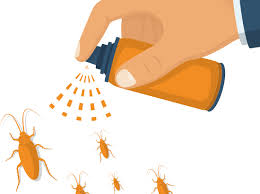
• Clear the area as soon as possible. Preferably, you want to get yourself and the people you live with – friends, family, pets, etc. – to vacate the area as quickly as possible. This is to avoid dangerous chemicals or the pests showing more signs of activity than before you tried DIY extermination.
• Call a professional to help you out. Calling a professional pest exterminator as soon as possible is your best bet in order to minimize the damage caused by a failed DIY.
Be sure to explain to your pest control worker what the problem is thoroughly, as well as the type of treatment that you used.
What Professional Pest Control Can Do For You
For any problem in your home that involves pests that just won’t go away, be sure to call a professional for guaranteed pest control services in Singapore.
Professional pest control services understand that it takes more than just chemicals in order to deal with an infestation. In fact, proper pest control management involves a multi-pronged approach that not only eliminates pests, but also includes measures to keep them from coming back to your home.
With a 24 hours pest removal company, you get the best services quickly for your home at any time of the day, whether it’s early in the morning to late at night.
(Disclaimer: this list is compiled in no particular order.)
Laundry Cleaning Method Explained
Posted by Editor on Oct 24th, 2018 in Lifestyle | 0 commentsHaving a busy schedule means that you won’t have time to do the laundry. Fortunately, the laundry service offers various methods for individual and commercial laundry needs. You can even get your clothes back through a same day dry cleaning process. But before you head to the nearest express laundry in Singapore, you might want to read up on the different methods they use to clean your clothes.
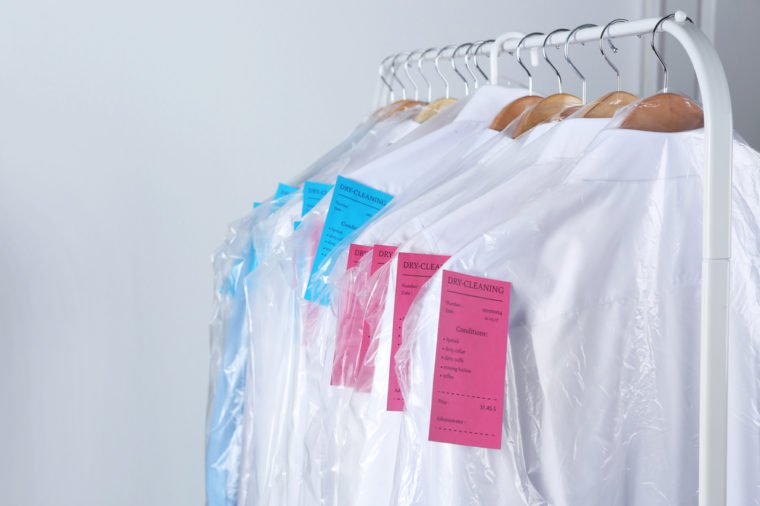
Labels and Sorting
To achieve very clean clothes, the laundry is first sorted based on the fabric, weight, color, degree of soiling, and the instructions on the care label. For example, a white shirt should not be washed in the same batch as a white towel. The staff will wash towel separately based on its weight, degree of soiling, and purpose. The last one is very important for laundry delivery services in Singapore because the customer will expect that the clothes will be returned to them in good condition.
Not all fabrics can be cleaned with water and detergent, tumble-dried or even ironed, however. There are also some fabrics that are only suitable for handwashing and should be not bleached or chlorinated. The clothes are also sorted based on the customer’s instructions. Some that are for commercial use such as laundry for spa and clean towels for hotels and restaurants should be cleaned separately from items for individual customers that are for wash and fold only.
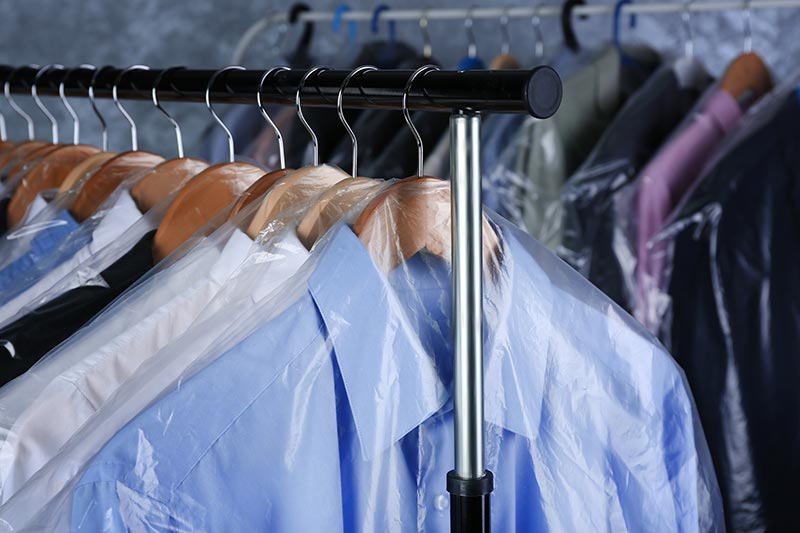
Dry-Cleaning
The dry cleaning method is known to use chemical dryer (dry cleaning agent) instead of water and detergent. The term might be somewhat misleading as the solvent is also in liquid form, but it can absorb oils and stains better than water and detergent without damaging the fabric. Unlike wet cleaning, the clothes are cleaned and dried in the same dry cleaning machine during the process. The dry cleaning price in Singapore is also cheaper than detergent because the solvent can be reused for other batches.
The machine looks similar to a regular washing machine, but it causes less damage on accessories such as buttons, sequins, beadings, and lace. It is a method perfect for almost any type of fabric besides wool, silk, and leather and will even make uniform laundry last longer than regular machine washing.
Machine-Washing
Unless the care label says the item should not be machine-washed, most fabrics are cleaned with water and detergent in a commercial laundry services shop. But the staff also takes note of the degree of soiling and the intended use of the garments. This means that items for individual customers should be separate from the fabrics used for commercial purposes. The agitation and rotation of the machine can be harsh on some items, even when they were made to withstand the cleaning process, so the laundry delivery staff also has to check for additional instructions on the care label such as water temperature, treatment, and washing condition. Items that should be handwashed can still be machine washed as long as the most minimal setting is used.
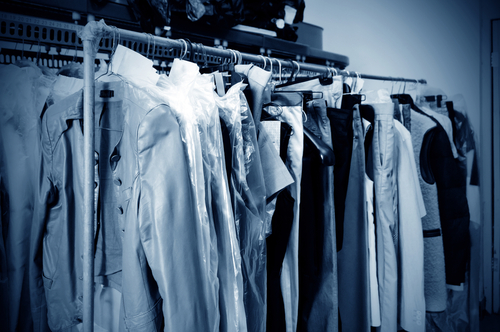
Tumble Drying
Some laundry delivery shops use a different machine for drying clothes. The staff checks the labels whether the fabric should be tumble-dried in low heat or high heat settings. Some clothes, however, should not be tumble-dried and should be flat-dried, drip-dried, or line-dried. The drying method used also determines which ironing method and setting is used by the laundry service shop.
Ironing and Steaming
The ironing labels determine the maximum temperature that should be used to iron clothes. Some 24 hour laundry shops also use steaming machines for other fabrics that can tolerate high temperatures because it’s more effective in removing creases and wrinkles. Finally, the best laundry will mend clothes (if there is any damage or missing buttons and accessories), fold, pack, and label items for pickup or delivery.
What You Can Do About Sleep Apnea
Posted by Editor on Oct 11th, 2018 in Health | 0 commentsSleep apnea can cause shallow breaths or breathing pauses while sleeping. These pauses can last for minutes and will result to disruptions and poor sleeping habits overall. The condition is a chronic illness and sometimes goes undetected until the person suffers from medical complications.
What should you do about sleep apnea?

Detection and Diagnosis of Sleep Apnea
There is no test to determine if a person has sleep apnea, because the symptoms are not apparent during waking hours and only sleeping companions will notice the signs, if he/she knows what to look for. The first sign is usually the loud snoring, which can be dismissed as fatigue or habit, so the person who might be suffering from the disorder, as well as members of the family, will have to look for the following signs:
• Chronic loud snoring (which means that the person snores almost every night)
• Pauses in breathing while asleep
• Snorting, choking and gasping sounds while asleep
• Insomnia, disruptions in sleep, and feeling that you’re out of breath
• Fatigue, forgetfulness, irritability or depression, headaches, and sleepiness during waking hours
• Having sore throat or dry mouth when you wake up

However, not everyone who snores has sleep apnea. So how do you tell the difference? Snoring should not lessen the quality of sleep, but if you feel tired during waking hours no matter how much sleep you’re getting, it could be sleep apnea. If you suspect that you have the condition, you should seek medical help immediately to avoid complications such as hypertension, heart attack, diabetes, obesity, heart failure, and increased likelihood of accidents.
Causes and Treatments
You are prone to having sleep apnea if you are overweight, hypertensive, a smoker, and if your neck circumference is greater than 40 cm. Your family’s history of sleep apnea and allergies (such as nasal congestion) can also contribute, and even the structure of your chin, septum, and tonsils.
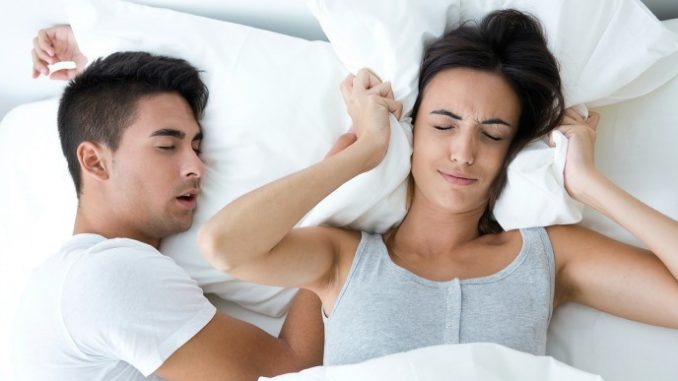
There are three types of sleep apnea, but the most common is obstructive sleep apnea which is the blockage of the airway due to the relaxing soft tissue at the back of the throat. Central sleep apnea on the other hand, is triggered by the faulty brain signals that control the muscles, while complex sleep apnea is a combination of the two. Be warned that people with central sleep apnea do not usually snore, unlike those with obstructive sleep apnea.
The doctor will recommend that you lose weight, stop smoking, limit your alcohol intake, limit the use of sedatives and sleeping pills, avoid caffeine and heavy meals 2 hours before bedtime, and to keep to your sleeping hours. To lose weight and get rid of extra tissue at the back of the throat, you need to exercise regularly so that the muscles in your airways open up and become stronger.
Your sleeping habits also need to change by propping your head up 4 to 6 inches with a special pillow, to sleep on your side, or to use a nasal dilator to open nasal passages.
Different Types of Leather to Consider
Posted by Editor on Oct 11th, 2018 in Lifestyle | 0 commentsLeather has been used for thousands of years, and yet even those who love this fashionable material don’t know much about its origins and why it’s so expensive in the first place. Let’s look at how leather is processed and the different types of leather that are made today.
Sources and Processing of Leather
By now you should be aware that authentic leather comes from tanned animal skin and rawhide. Most of the leather products in the market come from cattle skin, but other animal sources are used; such as deer, lamb, elk, pig, buffalo, alligator, goat, ostrich, snake, ox, kangaroo, fish, stingray, and yak skins.
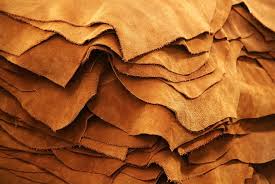
Leather processing can impact the environment, not just with its use of animals for the raw materials, but also the use of chemicals for tanning and the slow decomposition of leather itself. So, if you’re not amused with the idea of using animals for clothing and accessories, you should consider environment-friendly alternatives to leather.
Leather is used to create shoes, jackets, hats, belts, trousers, skirts, bookbinding, furniture cover, and bags. Although they might all look the same, the different processes in tanning result in various forms of leather, such as vegetable-tanned, chrome-tanned, aldehyde-tanned, brain-tanned, formaldehyde tanning, rose-tanned, alum-tanned, synthetic tanned leather, rawhide, and chamois leather.
The production, however, is divided into three main processes, regardless of the intended result; these are preparation (soaking, fleshing, unhairing, etc.), tanning (stabilization of protein from the skin or hide), and crusting (thinning, tanning or lubricating the leather). Other leathers also receive surface treatment after crusting.
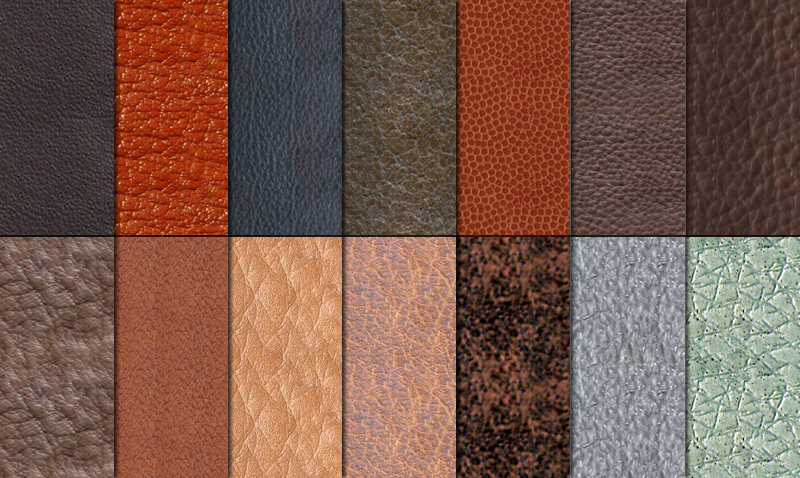
The Different Types of Leather
Leather can be classified in two ways, the type of grain and its appearance and coating (finishing).
Types of Grain:
• Top Grain: It’s the surface layer of the skin and is also the thickest, most durable, and softest part.
• Full Grain: This is a variety of top grain leather which is not altered so that it looks more natural.
• Split Grain: This is the layer found below the top grain and is considered less durable and stiff. One example of split leather is suede.
• Corrected Grain: This is a variety of top grain leather that has been sanded, buffed, and embossed to remove the flaws.
• Bonded Leather: This is a combination of leather pulp and boding materials and used as a layer on fibers. Some people don’t consider this authentic because the pulp is made from hide scraps.
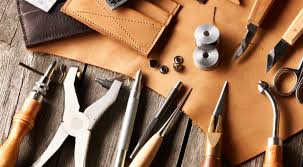
Types of Finishing:
• Aniline: This leather looks natural because it is not coated or pigmented to alter its appearance, but the process is only used for full grain hides that have minimal flaws on the surface. An example of aniline leather is nubuck.
• Semi-Aniline: This finishing goes through the same process as aniline leather, but is treated with pigments to make the surface color more uniform.
• Pigmented: This type of leather uses materials not suitable for aniline and semi-aniline processes. Pigmented leather is sanded, buffed, and embossed so that the grain looks uniform.
3 Salad Ideas to Make Your Meals More Appetizing
Posted by Editor on Sep 19th, 2018 in Food | 0 commentsFor health advocates, salads can stand alone as a complete meal. But for those looking to bulk up, salads are but appetizers to prelude the actual meal.
Here are three salad ideas to appetize any meal:
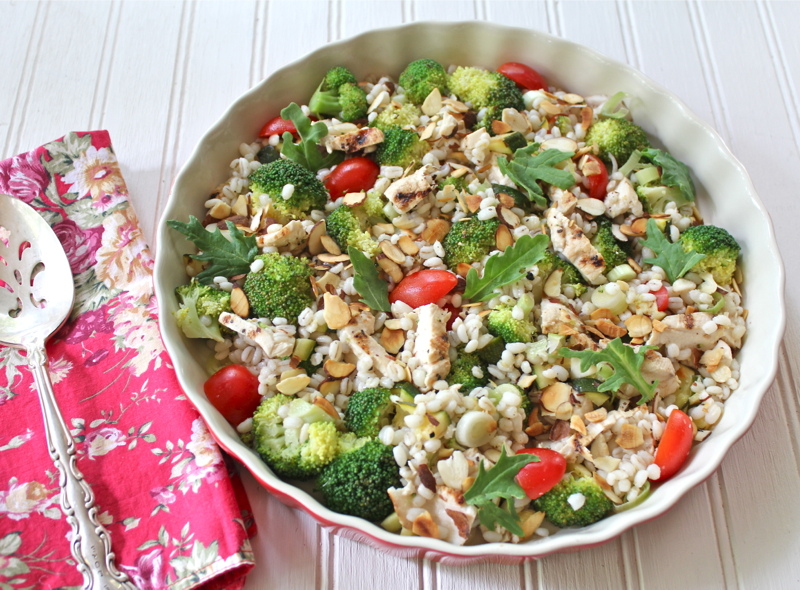
1. Greens and Barley Salad
To start off our list of salads, let’s start with a healthy one unless you’re looking to up your protein or veggie intake. For this, you’re going to need assorted greens which may include endive, radicchio and butter lettuce, carrots, cauliflower, vinegar, barley, honey, olive oil, salt, pepper, paprika and walnuts. Place assorted greens, carrots sliced into ribbons, cauliflower and barley in a serving dish. Prepare a screw-top jar and combine vinegar, olive oil, honey, paprika, salt, pepper and walnuts. Replace the top and shake well. Coat over the salad and top with walnuts.

2. Tuscan Bread Salad
For this one you will need fresh green beans, snap pea pods, asparagus, Italian bread, cherry tomatoes, small cucumber, olive oil, red onion, sweet peppers, Kalamata olives, basil leaves and red wine vinaigrette to be prepared separately aside from your salad. First off, prepare the beans by trimming off the ends and cut it into pieces of about 2-inches. In a saucepan, toss in asparagus, beans and pea pods in lightly salted water. After boiling, transfer veggies to a bowl of ice water. Once chilled, drain the water and let it stand. Next up, spread a thin line of oil in the bread. Toast the bread until lightly brown, using a grill or a broiler. Cool for a few seconds and tear bread into pieces sizing about to an inch per piece. Combine beans, bread, mixture, cherry tomatoes, cucumber, red sweet peppers, red onion, Kalamata olives and fresh basil. Pour the red wine vinaigrette over the tomato mixture and coat gently. Next up, mix remaining dressing over the tomato mixture. Toss again before serving, and add salt and pepper to your liking. For the red wine vinaigrette, place olive oil, red wine vinegar, Dijon-style mustard, garlic, salt and black pepper in a screw-top jar and shake well.

3. Tuscan Tuna Salad
For this salad you will need lemon, cannellini beans, albacore tuna packed in oil, red onion, arugula or mixed spring greens, grape or cherry tomatoes, salt and ground black pepper. Juice the lemon and set aside the peeling. Combine cannellini beans, tuna and onion in a bowl. Add the lemon, lemon juice, arugula and tomatoes. Toss gently. Season with salt and pepper.
These salads, along with most, can be adjusted to have more protein or more veggies. Just add more chicken or tofu then you’re good to go. Hope this list helped you plan out you’re lunch for the week. Enjoy those greens!
7 Ways to Keep Clothes in Good Condition
Posted by Editor on Sep 19th, 2018 in Lifestyle | 0 commentsWe have to meet our basic necessities if we want to live as humanely as possible. And one basic need is to be clothed decently. As we meet this need, there are times when we do it a little bit over the top, purchasing or needing to purchase clothes more than what we need.
So to stop the cycle, we need to take care of what we do have in our closet, giving both our impulses and our wallets a break. Here are some tips you can consider in keeping your clothes in good condition:

1. Choose and store by color. If you’re out for coffee with a friend, make sure you’re wearing a colored top or dress to ward off any stains you seem to magnet to yourself. Admit it or not, it’s easier to camouflage stains than your clumsiness. Also, store clothes according to color. Keep those blues with the blues to avoid running over the color with your whites and beiges. It should be a reflex for you to coordinate your threads by hue so they can last long.
2. Anticipate your clothing behavior and preferences. If you need dress shirts for work, then don’t binge buy cotton shirts. If you don’t like ironing, stop reaching for those iron-hungry type of clothes that need heat before wearing them. Anticipate the events before purchasing those clothes and you’ll give breathing room for those functional outfits in your closet.
3. Store according to material. For sweaters, you have to keep in mind that they sag if hung for too long. So keep them neatly folded and stacked inside your closet or chest drawer. As for dress shirts, they crease easily so make sure you keep them hung inside your closet.
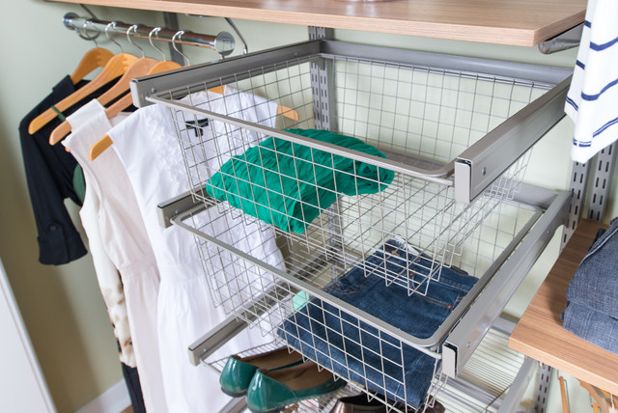
4. Dress up or down. When you know you’re up for long hours in front of a canvass, give your dress shirt a huge favor and change into grubby paint clothes instead. It’s a surefire way to ruin your clothes if you wear them to just about any activity you engage in. Be reminded that clothes also have purposes too, aside from keeping your back warm. So make sure they serve their purpose as long as they can, without you cutting short their lifespan just because of a stain that just won’t come off.
5. Don’t launder often. Clothes are basically made of thread and sad to say the wear easily if you keep subjecting them to frequent laundry. Keep a generous portion of clothes options so you won’t have to use that same dress over and over again, making it age way before its time.
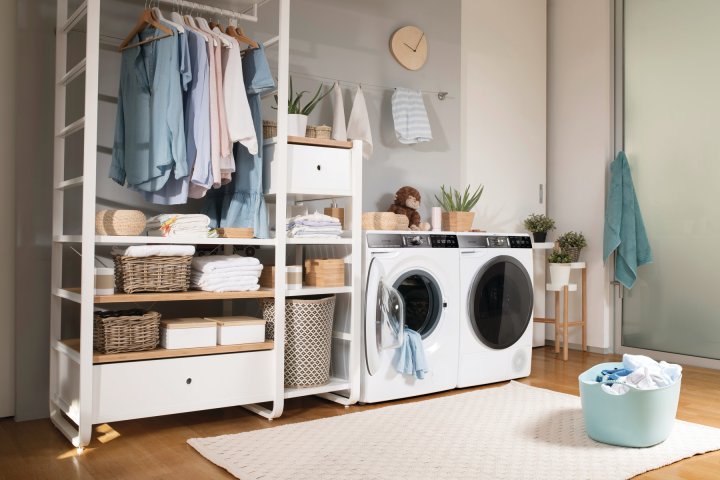
6. Zip up. Before tossing jeans and hoodies inside the washer, make sure they’re zipped up. Open zips can damage other clothes or even the jeans and hoodies themselves. So keep their teeth well-zipped and tucked safely away.
7. Patch immediately and frequently. If you discover a tear or two in your clothing, patch them immediately. Spare yourself of the heartbreak of finding an even bigger hole just because you procrastinated patching it up before tossing it the washer.
